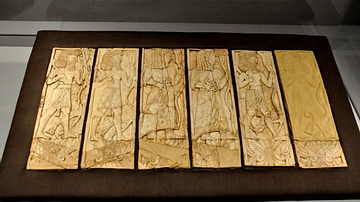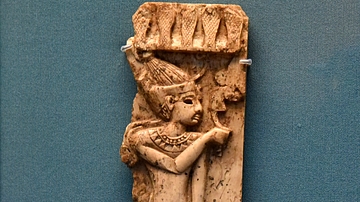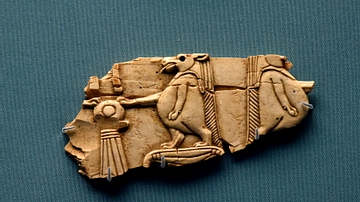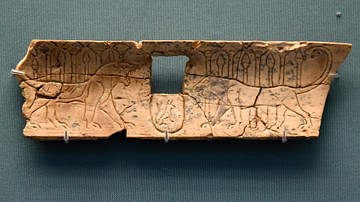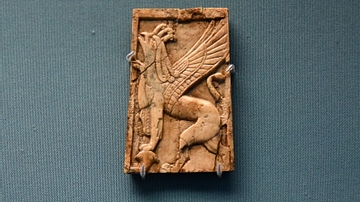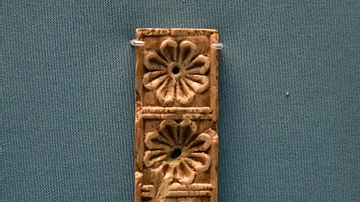Illustration
Ivory panel with an Egyptian religious scene. On a sacred barge with papyrus prows, a crowned sun disc (with two cobras) rides and appears to arise from the horizon. It is flanked by two Ba birds. On the disc, there is the so-called triple (hmhm) atef crown, flanked by uraei set on a pair of ram's horns. The wedjat eye, looking to the left, is at the center of the disc. The Ba birds are human-headed, have human arms, and wear the double crown of Egypt and the nemes head cloth. The overall design is reminiscent of a very complex 'theological' jewelry, such as that from the tomb of Tutankhamun.
Excavated by the British School of Archaeology in Iraq from Room SW37 at Fort Shalmaneser, Nimrud, Iraq. Neo-Assyrian Empire, 9th to 7th century BCE.
Iraq Museum, Baghdad.
About the Author
References
World History Encyclopedia is an Amazon Associate and earns a commission on qualifying book purchases.Cite This Work
APA Style
Amin, O. S. M. (2019, June 08). Ivory Panel with an Egyptian Religious Scene from Nimrud. World History Encyclopedia. Retrieved from https://www.worldhistory.org/image/10896/ivory-panel-with-an-egyptian-religious-scene-from/
Chicago Style
Amin, Osama Shukir Muhammed. "Ivory Panel with an Egyptian Religious Scene from Nimrud." World History Encyclopedia. Last modified June 08, 2019. https://www.worldhistory.org/image/10896/ivory-panel-with-an-egyptian-religious-scene-from/.
MLA Style
Amin, Osama Shukir Muhammed. "Ivory Panel with an Egyptian Religious Scene from Nimrud." World History Encyclopedia. World History Encyclopedia, 08 Jun 2019, https://www.worldhistory.org/image/10896/ivory-panel-with-an-egyptian-religious-scene-from/. Web. 17 Jul 2025.



